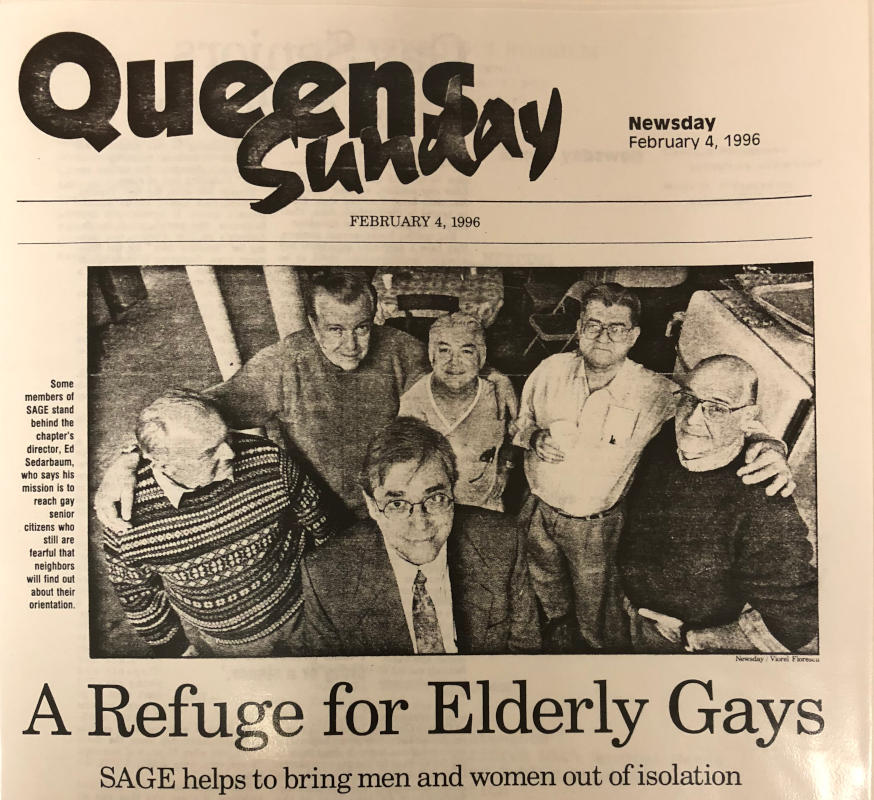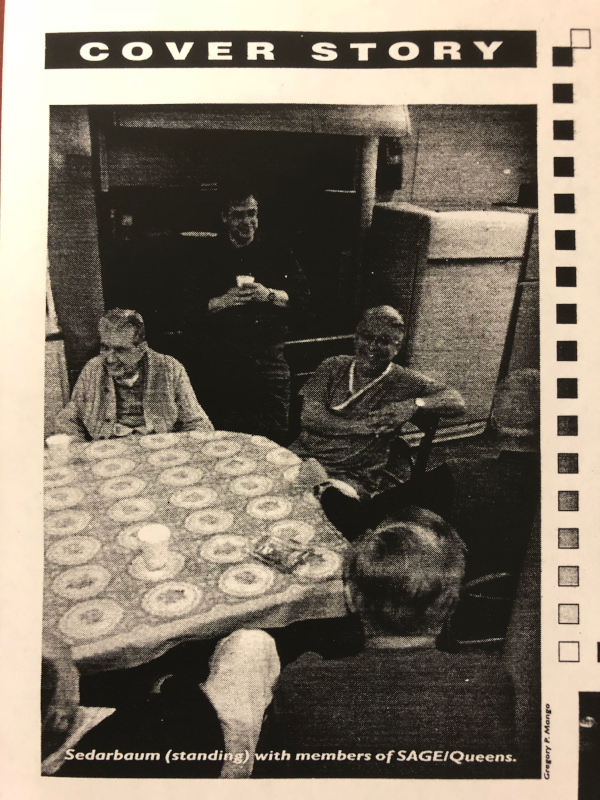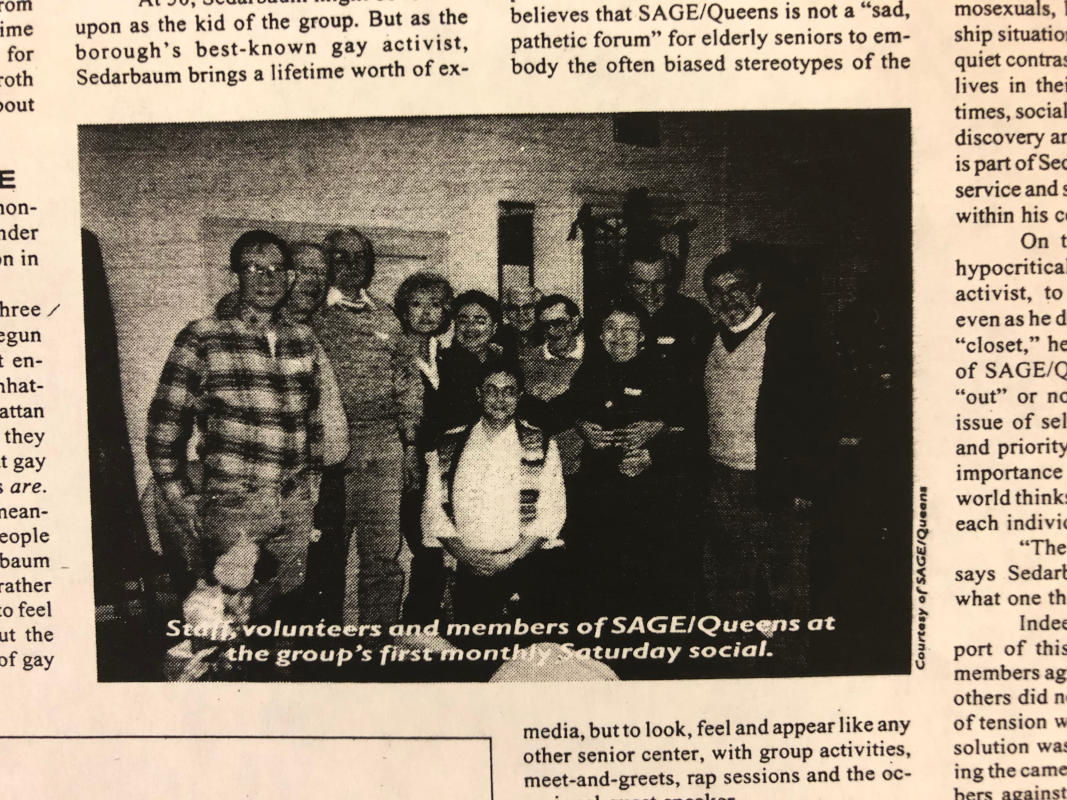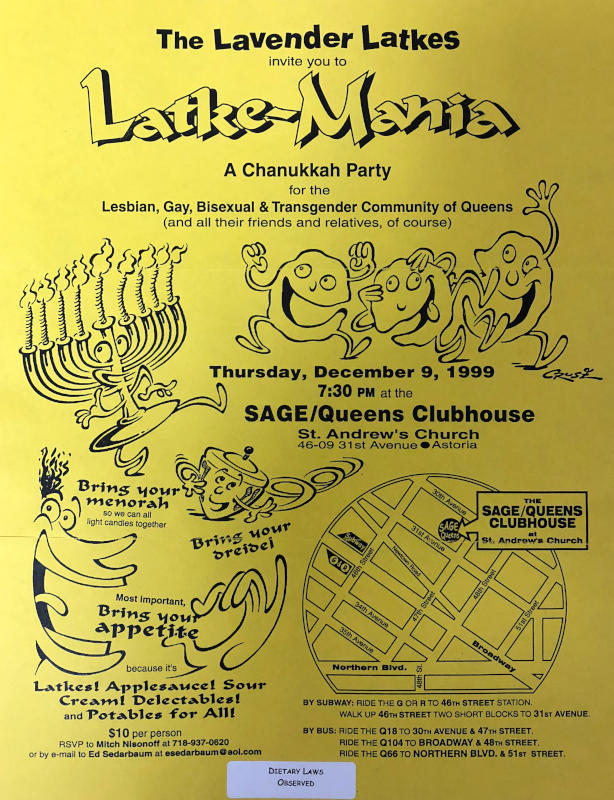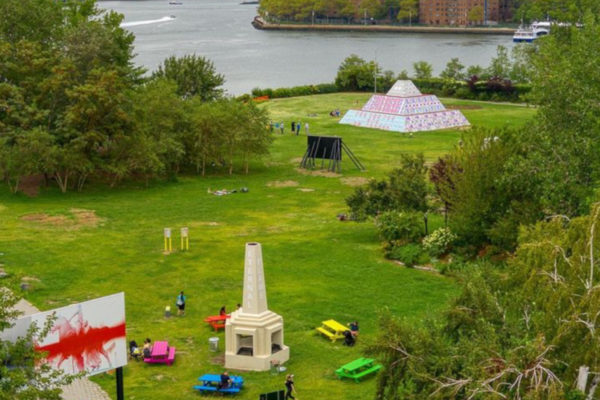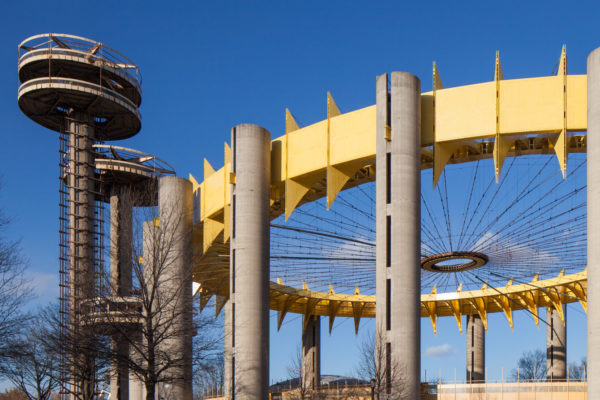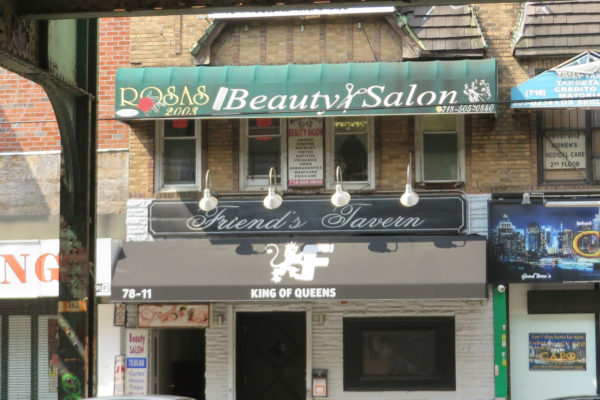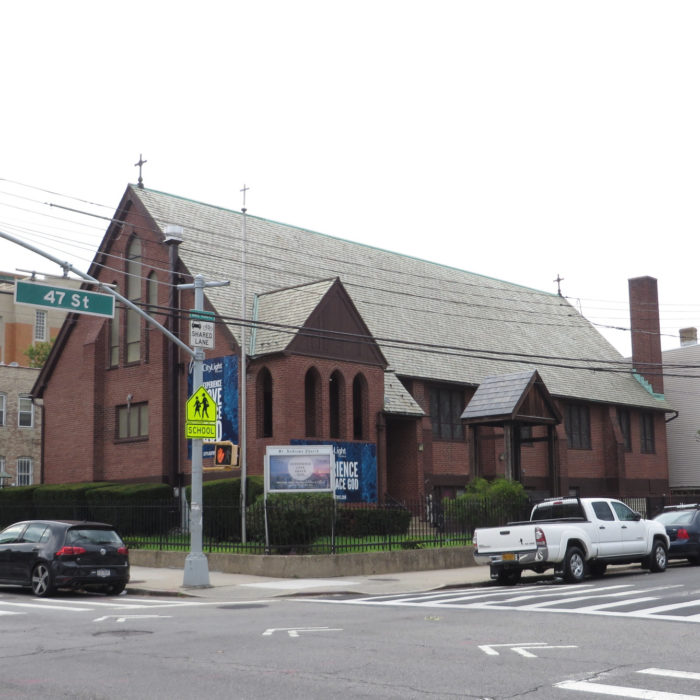
St. Andrew’s Episcopal Church
overview
From October 1995 until at least December 1999, Queens/SAGE, a social services and support group for LGBT senior citizens (unaffiliated with the nationwide organization SAGE), met in the basement of this church in Astoria, Queens.
In recent years, the space became Carmen’s Place and then an Ali Forney Center shelter, both of which provided housing for homeless LGBT youth.
On the Map
VIEW The Full MapHistory
SAGE/Queens Clubhouse, a center for LGBT elders of Queens, was opened in October 1995 at St. Andrew’s Episcopal Church, in Astoria. The clubhouse occupied the basement space of the church; the wrought-iron perimeter gate once held fliers announcing the group’s activities. While the group used the name SAGE, it was unaffiliated with the original SAGE (Senior Action in a Gay Environment) in Manhattan, an organization founded in 1978 to provide services and care for older LGBT people, and that later opened chapters nationwide. Ed Sedarbaum, the founding director of SAGE/Queens, noted that the Manhattan organization let them use the familiar SAGE name in order to reassure closeted residents in Queens.
In developing SAGE/Queens, Sedarbaum drew on his experience as a former caseworker for the city’s Department of Social Services as well as his volunteer work at the Gay Switchboard and as a rap group leader at Identity House, both in Manhattan. To create a gay senior center for Queens, Sedarbaum worked with then-Queens Borough President Claire Schulman, who provided a start-up grant. This was apparently the first time a gay organization in the city received public funding. It took Sedarbaum four months of being turned down by about 40 centers, including houses of worship, before successfully meeting with Reverend Thomas E. Schirmer at St. Andrew’s Episcopal Church, who was looking for “creative uses” for the basement space.
Sedarbaum noted that gay couples traditionally moved to Queens, particularly Jackson Heights, to lead quiet, private lives, but that LGBT senior citizens, who grew up in an era when being openly gay was especially dangerous, were still fearful that their neighbors would find out about their sexual orientation. As such, aging LGBT people — already “well-schooled in concealing their identities,” recalled Sedarbaum — were more hesitant to reach out for help and access some social services used by their heterosexual counterparts. The SAGE/Queens Clubhouse, which featured a rectangular meeting room and a small kitchen and office, sought to create community for LGBT people who were often at risk of feeling isolated and unable to talk about their lives uncensored.
Reminiscence about old times is key. It gives you a sense that you have a life that was filled with meaning. And for gays and lesbians, it’s not like they can just sit down anywhere and talk about the old days in [the gay Fire Island enclave of] Cherry Grove.
Activities were held on Tuesdays and Fridays, with monthly Saturday parties, and included discussion sessions, entertainment, art classes, and exercise programs. The group drew men and women of different faiths as well as people of color, predominantly from Queens and Long Island.
SAGE/Queens was here until at least 1999. In recent years, the church basement has been used as a homeless center for LGBT youth. Until 2007, when the Episcopal Diocese of Long Island temporarily closed the building, Reverend Louis Braxton, a pastor here, operated a center called Carmen’s Place. In November 2009, the Ali Forney Center (AFC) opened a shelter with 16 beds. AFC and the Episcopal Diocese of Long Island are currently working on a joint proposal to have a new shelter constructed next to the church.
Entry by Amanda Davis, project manager (July 2019), and made possible by the New York State Council on the Arts with the support of Governor Andrew M. Cuomo and the New York State Legislature.
NOTE: Names above in bold indicate LGBT people.
Building Information
- Architect or Builder: Unknown
- Year Built: 1925
Sources
Alejandra O’Connell-Domenech, “Community Board 1 approves plan for LGBTQ homeless teen housing facility in Astoria,” QNS, January 22, 2019, bit.ly/2SLRx7Z.
Charlie LeDuff, “Gay, Getting Old, Getting By,” The New York Times, March 31, 1996, section 13.
Ed Sedarbaum, e-mail to NYC LGBT Historic Sites Project, October 26, 2020.
Ed Sedarbaum, interview with Richard Shpuntoff, December 30, 2010.
Ed Sedarbaum, phone call with Amanda Davis/NYC LGBT Historic Sites Project, September 2018.
Eric Greenberg, “A Refuge for Elderly Gays,” Newsday, February 4, 1996, backpage and 52.
“Inside Q-GLU,” newsletter, March 1999, in The Daniel Dromm Papers, The LGBTQ Collection, LaGuardia and Wagner Archives, LaGuardia Community College.
Richard Shpuntoff, Julio of Jackson Heights, documentary, 2016.
Sarah Kershaw, “For Gay Elderly, a New Haven,” The New York Times, October 8, 1995, CY9.
Do you have more information about this site?
This project is enriched by your participation! Do you have your own images of this site? Or a story to share? Would you like to suggest a different historic site?
